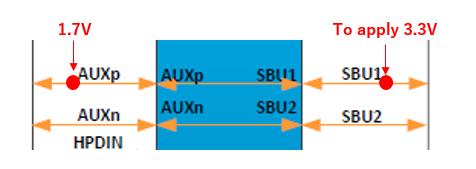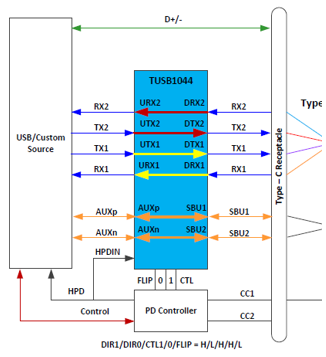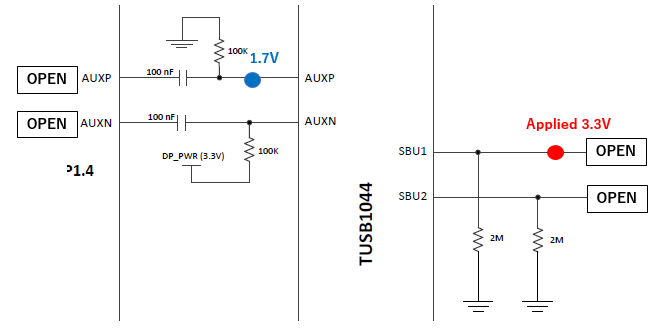Hi Team,
Currently, our customer is evaluating an internal MUX of TUSB1044.
If they apply 3.3V to SBU1 pin, AUXp voltage is around 1.7V.
Does MUX have a cause of voltage drop?
Of cause, they understand that this usage is unique.
However, they would like to know this cause.
Regards,
Kanemaru






